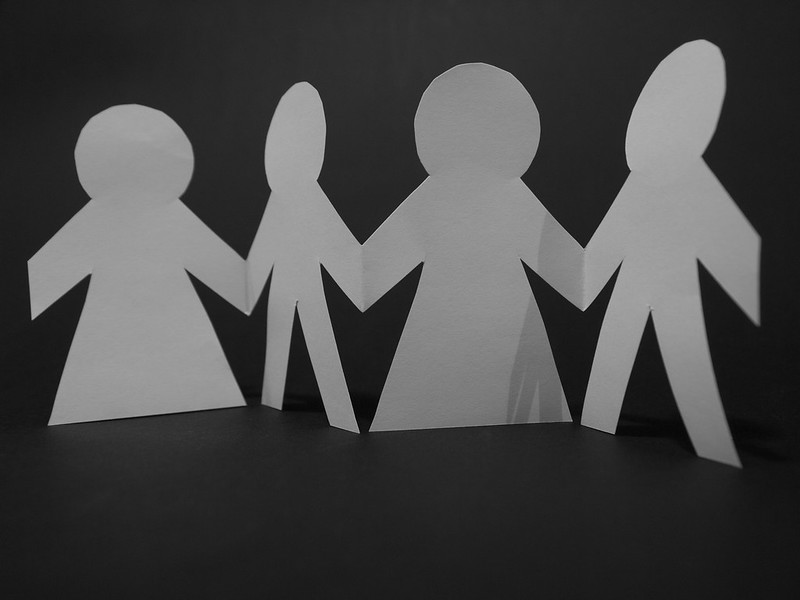 | |
| Dr Harris' bestselling self-help book on transactional analysis |
My approach to psychology is largely influenced by evolutionary theory. The brain is an organ that developed to help man survive during the 200,000 year period in which he lived as a hunter-gatherer. In comparison, what we understand as modern man begins with the commencement of agriculture 10,000 years ago. In the popular mind modern man is younger than this even - he is identified with the computer age , a period kickstarted by the industrial revolution less than 200 years ago.
Not surprisingly, our perception of ourselves as modern means we do not really understand ourselves very well - by which I mean our needs. Because we fail to understand what our brains evolved for, we fail to raise our children to be happy and well-balanced. Parents often believe that because their child is fed, clothed and is safely watching TV that their job is done. But if the child feels lonely or misunderstood and gets angry or demanding the parents too become childish and angry in response. They may remind the child that s/he has been given more than they ever had and that such outbursts are indications of ingratitude and poor character. 'I don't know who he takes after' or, 'He has the devil in him,' they may say. What the parent has failed to understand is the situation of the child from its point of view.
The child' experiences the world differently to the adult. The child is physically smaller than the adults and may feel powerless, intimidated, separate and isolated. The child has less freedom than adults - he must be accountable for his behaviour and if he is unhappy at home can hardly leave and get himself a place of his own. He may feel confined - even trapped! Above all, the child is reliant on the relationship with his parents to support his emotional needs.
We can think of a child's needs - for understanding, attention, approval and recognition - as a need for grooming or stroking. Grooming in primates requires a state of trust between the two groomers. In both, the act of combing and stroking fur invokes calmness, pleasure and facilitates bonding - whereby a sense of separateness gives way in light of the close attention devoted to performing the grooming motions.
In humans, words as much as physical strokes are integral to grooming. ('Hi, how's it going?' and the like.) Both serve the purpose of conveying to the other person that someone cares about how they feel and how they are doing. Both are acts of attention and recognition.
When a child has a parent that cannot provide this sense of well-being the ancient brain changes because for it grooming (or its lack) is a matter of survival - regardless of whether food, clothes and TVs are in abundance. Grooming signifies closeness and bonding and without this survival for a hunter-gatherer is compromised.
In Dr Miller's book I'm Okay-You're Okay he discusses how a child unable to elicit grooming from its parents will change. He will come to perceive himself as not okay and his parents as not okay too. This, I'm not okay - You're not okay position is damaging because it is one of hopelessness. The child learns the lesson that no grooming is obtainable and the adult component of his personality, which functions to obtain grooming (i.e. manipulate the social environment), gives up. As a result he will aim to just get through life, to survive - but have no expectation of anything more than this.
How our parents treat us affects how we view others around us. If there is no love (i.e. grooming and stroking) at home then we can see all people as 'not okay' i.e. unable to provide us with what we need. Dr Miller views this mindset as one that leads to self-harming behaviour. Self-hitting is a way of acting out the frustration of not being able to elict grooming from others. The child is saying that, If I am not okay ( I need but cannot obtain grooming) and you are not okay (you are unable to provide grooming) then this (the body/self) is useless and I shall smash it.
In my view, people who feel some part of them is
unacceptable and is therefore blocking any possibility for grooming
may do this too. For example, people who feel that they are too fat, or ugly and feel unable to change this aspect of themselves may self-harm too.
Sometimes grooming is available from the parent but it is inappropriate and approaches a taboo such as incest. In this case, the child must oppose the impulse to be groomed by the parent because it fails to have the soothing effect he needs. In such a case hair-pulling behaviour may emerge as a way to deactivate the approach behaviour that is triggering the incest taboo.
As we get older we must try to recover the child from the situations in which negative feelings took over - including when self-directed behaviour was first encountered. The aim is to reconnect with and relive the situation as it was experienced at the time. Transactional psychology aims for this but says that change can only come by evaluating the data from the past with the faculty of the adult in the present. It is not all about the past but about the present too!



